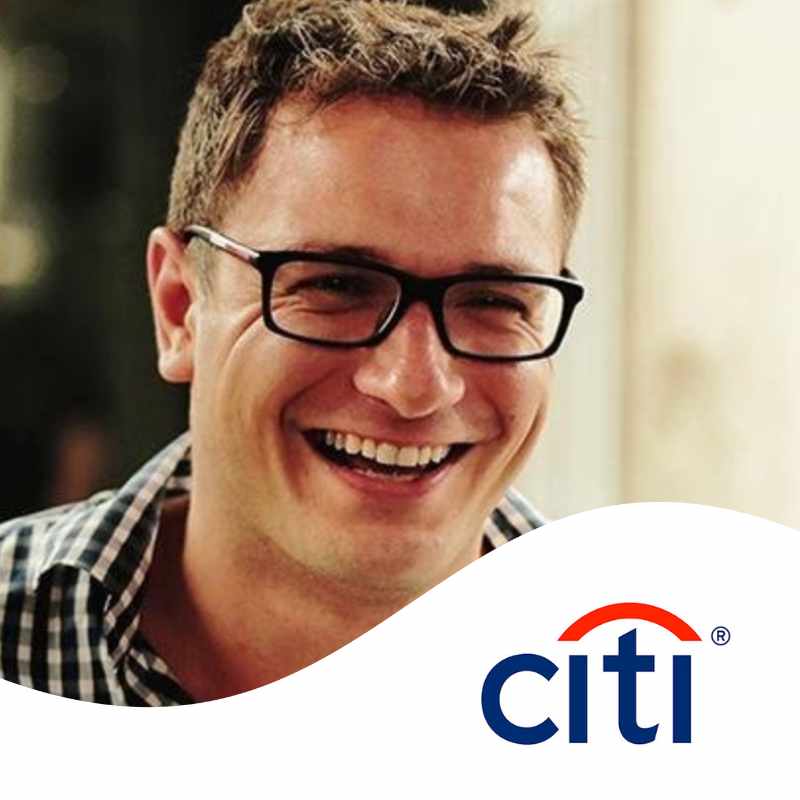Although most companies are now running internal innovation programs, so far we haven’t heard a lot of success stories.
To the contrary: such programs tend to exceed budgets, aren’t delivering commercially scalable ventures and at best, only help bringing in new skills- and mindsets.
Overall, in most organizations, they yet stray away from management’s expectations. But we might need to be a bit more patient with expecting results, as beneath the surface, a lot of good stuff is happening. As innovators have both the job of delivering innovation and fundamentally changing the organization in order to deliver innovation, this isn’t easily done. Grass doesn’t grow faster if you start pulling it.
More than fifteen corporate innovators took to the stage at Innov8rs Shanghai last June to talk about their trials and tribulations in setting up and sustaining internal innovation. The one theme across all of their stories was the pressure to deliver results fast versus the reality that success requires patience and persistence. Here’s a summary of five of the approaches shared.
Get Teams To Talk
 Michael Quinn of Cigna discussed the challenges of changing culture and capability internally. Cigna has big ambitions – to double growth (again) over the next five years; but as the Global Head of Product, Michael’s product teams themselves were very small in relation to the 40,000 headcount worldwide.
Michael Quinn of Cigna discussed the challenges of changing culture and capability internally. Cigna has big ambitions – to double growth (again) over the next five years; but as the Global Head of Product, Michael’s product teams themselves were very small in relation to the 40,000 headcount worldwide.
‘Small’ meaning 3-5 people in each market with ‘product’ mentioned in their role.
They were also all working in separate silos, with little or no communication between each island, yet solving somewhat similar problems: there were thousands of products already on the shelves which were being fixed, tweaked and iterated on, with only 100 or so new ideas brought to Michael for review annually.
Something needed to change so they could rise beyond this ceiling of growth.
So he helped shape their ‘catalyst’ program from a series of siloed product teams into a community based on best-practices – turning individuals into change agents, who were proud to contribute to an outcome which was greater than the sum of their parts.
In this spirit, Cigna extended the small product teams into cross-functional pods of 30, bringing them together by hacking the traditional funding model: a central budget was used to take team members out of their mental comfort zone and their physical space, and train them collectively in the same place.
For Michael, one key challenge was how he could motivate team members to do differently in their day-to-day. He would need to not only expose his teams to tools like design thinking by running a one-off workshop, but ensure that they were engaged enough to embrace and embed these ways of working in their ‘business as usual’.
So the company went beyond the three-day training and sprint cycle by extending to three months, working through customer interviews, identifying themes and generating insights before entering a shark tank to pitch and vote on 3 successful ideas based on what was desirable, feasible, and viable.
What surprised Michael was the sheer level of emotional investment by the program participants. Those who didn’t get through were deeply disappointed.
And so on reviewing the basis for their program 2.0, they decided to catalyze this energy and personal investment by reviewing their metrics. What did ‘new value’ really look like?
First, Cigna changed the competitive nature of the Catalyst program into an ‘investment angels’ setup to create more of a community dynamic
Before they had assumed that innovation was all about bringing as many new products to market as possible; but their customers were saying it was all about experience and service, and so that became the focus for the program.
Lastly, they built the program into their 2019 annual planning process, to make innovation not a separate basement project, but a central part of the working environment.
Start Small
 How did Daixao Zheng of Johnson & Johnson build and sustain buy-in and a sense of ownership for innovation in her commercial healthcare branch?
How did Daixao Zheng of Johnson & Johnson build and sustain buy-in and a sense of ownership for innovation in her commercial healthcare branch?
Where Cigna’s program scope was about transforming R&D beyond incremental innovation, Daixao’s constraint was that her program talked solely to J&J’s sales arm in China to focus on the development of new business models.
“We know what’s in it for the company when it comes to innovation, but our employees rightfully ask, ‘What’s in it for me’?” She reminds us.
So Daixao went on to re-evaluate the typical innovation framework, breaking it down and making it smaller to address the direct interests of the commercial unit; which were in essence to get deals signed faster, easier and with stronger incentives.
As we know, innovation is not low-hanging fruit. Even incremental innovation requires some hard graft and investment alongside your daily operational work to realize the benefits. How could she get the sales teams to internalize its value, to bring them onboard?
“I tried to minimize innovation by appealing to an immediate problem they needed to address, for example how to differentiate at clinical knowledge-sharing events? Or how to empathize with customers by understanding their pain points and needs?”
Daixao set out to simplify the typical innovation methodologies by breaking them into pieces, picking and choosing the parts which appealed to the immediate reference points and value spaces of sales.
The first stage of design thinking is all about empathizing with the customer, and so this related to what the division were applying every day in every aspect of the sales cycle – from prospecting to closing. How could teams better understand and tap into the implicit needs that customers couldn’t articulate yet, through ideation?
Daixao considered the value of tailoring the program depending on the level of understanding the teams had of the process, and the problem they were trying to solve:
For those who had never had exposure to innovation journeys before, design thinking was most effective to empathize with customers and see immediate impact.
For those who are trying to experiment with new ideas but are stuck in their mindsets and can’t see beyond the next sale, offering smaller SIT sessions could be the solution.
And for those who are stepping further into ideas they want to validate, launch and verify in a real context, aspects of lean startup would be a great space for prototyping, reviewing and improving.
Take It From The Top
 Meanwhile at Porsche, Janice Tsang experiences a similar challenge with cementing innovation legitimacy as a sales and marketing subsidiary:
Meanwhile at Porsche, Janice Tsang experiences a similar challenge with cementing innovation legitimacy as a sales and marketing subsidiary:
“China was seen as an emerging market for us, but now it has a foothold in contributing to volume and profit. Innovation has always been a core part of our brand, the question is, how far is it really lived in a subsidiary when you’re really tasked to get cars out to the distribution network?”
The expectation from HQ to deliver plans dutifully and years in advance is both a blessing and a curse. The good kid in the east isn’t supposed to disrupt the industry.
Moving from a pure play car manufacturer to a broader purveyor of ‘mobility’ was a massive change in positioning for Porsche. Janice discussed how changing the mindset of management was fundamental to their internal innovation program succeeding at a local level.
“We asked people what was predominantly holding Porsche back from innovating locally, and their answer was overwhelmingly ‘HQ control’.
Before talking about how we could collaborate with start-ups, run any kind of campaign or start idea funnelling, I really wanted to have an audience with my senior management team to open up their minds.”
To this end, Janice invited board members and senior executives to visit China for a three-day learning tour. The subsidiary showed them the big digital disruptors, autonomously driven cars, and one-of-a-kind consumer landscape before they met several startup incubators to see what an emerging ecosystem might look like.
This timebox created an incubator of its own before the leadership team flew back to Germany – one in which they could grow what they had learned into a plan of action. Through a fresh pair of eyes they were inspired to create something of a ‘shopping list from China’; and in return, committed to providing their China subsidiary more autonomy to innovate faster and easier for this demonstrably unique customer base.
And so, Janice and her team were given the autonomy to cement their local legitimacy as innovators, and be something beyond a pure sales and marketing arm.
They received a mandate from the engineering lead to let a local startup build an in-vehicle entertainment system; a 3-week project. Then, they took steps to begin bringing this kind of innovative software development in-house to keep up with China’s evolving and essential digital ecosystem. This gave the subsidiary legitimacy to voice other innovation hindrances for employees – such as the need for more automation to support repetitive daily tasks.
Shape A Survival Strategy
 Victor Alexiev of Citi Ventures is all about pragmatism when it comes to keeping up innovation internally.
Victor Alexiev of Citi Ventures is all about pragmatism when it comes to keeping up innovation internally.
“Before I worked in an innovation department, I built companies. To this end, If it doesn’t ship and it doesn’t pay the bills – it doesn’t fly. So this is the approach I tried to deploy within and around the Citi innovation machine.”
His learnings over 18 months speak of a survival strategy; this is primarily a way to preserve product-market-fit and remain relevant, as well as discovering new markets and customers to keep revenues rolling in. But he also sees internal innovation as something ‘softer’ but nonetheless important for survival; a signalling strategy towards partners, competitors and employees.
In the last few years, people were willing to sacrifice 40% of their salary to work for a company which gives them future-readiness and enables them when it comes to innovation.
“You need to offer an outlet for creative people”, Victor explains.
In this respect, it’s useful to map a survival strategy on a scale of 1-10 in terms of low-hanging fruit versus longer-term goals.
On the lower end of the spectrum, you have fixes and incremental improvements, adopting technologies and analyzing existing processes. Somewhere in the middle, you launch new products and services with existing client groups, via the same channels and infrastructures that already exist. And towards 10, you go crazy and try to self-disrupt; lest your competitors do it for you. They learned that trying to provoke yourself is a very valuable process, and a healthy way to grow..
Citi was the first bank to set up labs, which serve as their innovation delivery network. Citi Ventures work three-fold in terms of mandates – invest, explore, incubate.
When it comes to corporate VC, Citi Ventures wouldn’t invest in something they couldn’t use, or their clients couldn’t benefit from.
Victor’s pragmatic approach also filters into their incubation program, which is all about the launch:
“Everything about engagement and awareness is predicated by launching. If it doesn’t help that to happen, I’m not interested in it. I believe that cultures which compete stem from success.”
Then, the program begins an ‘idea massacre’ where most of the portfolio dies at the first hurdle. The reason for this is that not all ideas are…
- Relevant to the business
- Executable
- Have the right teams, or
- Have an underlying business model.
As the incubator starts validating problems, another 50% of ideas disappear. At this point, they can move towards visual and technical prototypes. From here, only a small fraction get piloted – only those which can be easily justified and make a proportionately large impact across the organization.
“You can get easily excited by a couple of million, but if your company make billions in P&L, they won’t care.”
What are his survival tactics in summary?
- Align incentives: a lot of programs run on volun-telling and volunteering – management say you’ve got to innovate. Be aware of what individual development plans are, and enable them to benefit from the program.
- Clarify the message: if you’re dealing with 50,000 people in a region, it’s very easy for the message to get lost. Stay on topic, so employees understand why they should approach you.
- Beware of scope creep: once you’ve shipped a couple of products to market, everyone wants to be your friend. Protect yourself from the logistical challenge of responding to an email from 1000 people in a month.
- Keep an eye on outcomes: Oftentimes it’s easy to focus on output and throughput, but these are not always related to business outcomes.
In the end, it’s all about generating business outcome, because without management pulls the plug on all the fun, and you have to shut up shop.
Sustain Through Culture
 Osram has over 100 years of history, and they were redefining their strategic focus: rebuild the corporation’s technical heritage to drive the experiences of the future, by using lighting to improve lives.
Osram has over 100 years of history, and they were redefining their strategic focus: rebuild the corporation’s technical heritage to drive the experiences of the future, by using lighting to improve lives.
One of Beibei Lei’s key priorities when setting up their innovation program was to instil a set of cultural values – guiding principles for the core organization on how to behave day by day to achieve a set of strategically-related outcomes.
This involved searching for a set of opportunities to promote an intrapreneurial mindset, to get everybody in the organization onboard with innovation. They embedded a set of cultural incentives in several ways. An award was introduced to the company’s ‘China Star’ program, which sought to recognize and reward intrapreneurial behaviors. Also, Osram launched an iSpy program, which shifted the mindset from focusing on internal technologies to looking at what was happening in the external market, to ask questions like ‘how can technology trends support our market opportunities?’
The program became a cultural catalyst for embracing the new in a way which impacts human life. Assuming the format of a TED Talk, internal and external speakers were invited to share what was happening across a roster of dynamic industries. This brought fresh ideas to employees, inspiring the core business to bring their own ideas to the table; how could they make Osram valuably different in the next 10 years?
Then, Beibei considered capabilities: you need muscle to realize your ideas, therefore it’s critical to build knowledge, offer employees the experience they crave, and enable them to feel and share the success of being an intrapreneur.
“The traditional knowledge-sharing format doesn’t work. We really need to let people feel and experience what it’s like to translate your ideas into real use cases – and see the impact first-hand.”
Based on a need to build confidence in employees to translate primary ideas into real business cases, Beibei launched the X Pioneer program – a 6 month journey which starts with a sprint, moves into a business canvas and prototyping, and teaches participants fundamental base knowledge about everything from funding to finding product-market-fit.
Mentors are brought in to challenge ideas, push them to think outside of the box, and make concrete progress at each milestone.
The program began with 5 projects, with four moving from business ideas to business models, and 3 moving through to the commercialization stage.
Looking back at their journey so far, this is what Beibei learned about sustaining an internal culture of innovation:
- Instil ownership: leaders need to lead by example for employees, and embrace an environment which welcomes the new. Everyone must feel like they have the authority to bring ideas to the table.
- Allow failure: encouraging employees to formalize ideas with a framework and tools enables them to test whether it works. Failure leads to new frontiers of discovery.
- Make impact: are your outcomes really inline with business priorities? And if they’re successful, how will you reward those who invested their time and energy?
As innovation leaders, building a culture requires creating soil for plants to germinate and grow. By cultivating a mindset and introducing new capabilities into the DNA of our companies, we can trust that meaningful impact will follow- if we and everyone involved are patient and persistent enough.

